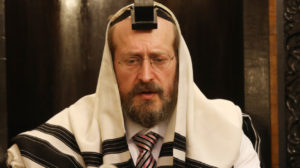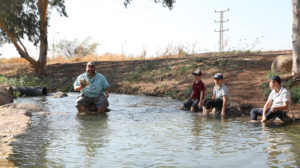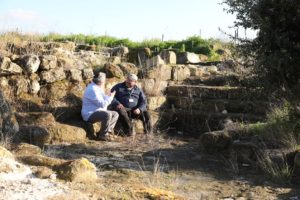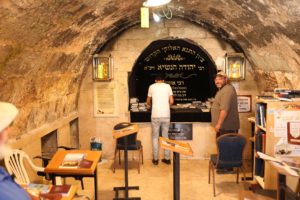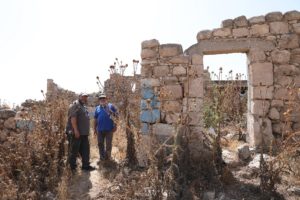Lost and Found
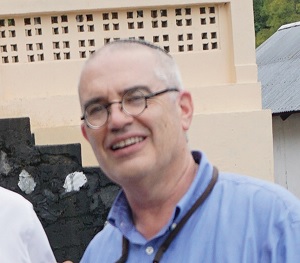

W
e’d heard about an old local shofar-maker in the remote Central Asian republic of Kyrgyzstan — a talk-show host who was killed by Muslims for expressing his belief in his Jewish roots — and how some ancient Jewish customs are still practiced by the nomads of the region. Could this information help us in our own long-standing quest into the fate of the Ten Tribes, an enigma that has enchanted so many Jewish merchant adventurers and explorers over the centuries? True, so many have gone before us and come away disappointed; but still, we never like to pass up a lead. Maybe this time, Kyrgyzstan — a mountainous, landlocked former Soviet republic, bordered by Uzbekistan on the west, Tajikistan on the south, and China on the east — would give a clue to solve the Jewish world’s greatest mystery.
The Ten Tribes, exiled from the Northern Kingdom of Eretz Yisrael close to 2,700 years ago, about 150 years before the destruction of the First Beis Hamikdash, are one of the world’s greatest bafflements. What happened to this majority of the Jewish population at the time? Did they simply disappear, or have they left some tracks waiting to be uncovered after more than two millennia? Seven hundred years after that exile, Josephus wrote, “The Ten Tribes are beyond the Euphrates until now and are an immense multitude and not to be estimated in numbers.” The search for them has fascinated scholars and laypeople alike, and when we heard rumors of a people with Jewish customs who have never been studied living in distant Kyrgyzstan, we felt compelled to investigate.
Secret Past
Our contact person was a man named Avraham Israel, who, we were told, accepted traditional Judaism upon himself and kept the mitzvos as best he could — quite an impressive feat in this backwater Muslim country. Mr. Israel agreed to meet us in an Asian restaurant he frequents, so there we were — on low seats in a curtain-secluded booth with richly and colorfully embroidered pillows to lean on, which felt a bit like a Seder — discussing Jewish life and what he believes to be the secret Jews of Kyrgyzstan. Avraham took his name by choice and legally changed his family’s first and last names. His son is called Menashe, hearkening back to the local belief that this nation’s forefather Manas is linked to the tribe of Menashe.
Avraham is convinced that the Bnei Manas of Kyrgyzstan come from one of the Tribes of Israel. In fact, it’s a family thing. His brother was a well-known local television personality and talk-show host, who began to publicly praise Israel and discuss his belief in a shared heritage. Muslim extremists demanded that he discontinue that line, but he refused to back down and was then murdered.
Avraham himself selectively chooses his Jewish practices but keeps Shabbos in some manner as his favorite. We spoke with his 16-year-old daughter who also touted this philosophy. He claimed that there was a small group of like-minded locals who got together, and our meeting gave us a good feeling about our just-beginning trek in Kyrgyzstan. We were expecting to find a secret countrywide movement of Jewish sympathizers and wannabes. Would we be disappointed?
Ancient Pathways
Kyrgyzstan sits smack in the middle of the ancient Silk Road, the most important trading route of the ancient world. The nomadic Kyrgyz people were conquered by the Mongols in the 13th century with the vast conquests of Genghis Khan. The immense Mongol empire, the largest in world history, stretched from Eastern Europe to China, encompassing parts of India, Iran, and the Sea of Japan. The Silk Road was started in the 2nd century BCE by the Han dynasty in China, and since then Jews have lived and prospered in communities along this prime trade route. The 12th-century Jewish traveler Benjamin of Tudela chronicles numerous active Jewish communities along this route, describing their demographics and customs. There was an ancient tradition that the Ten Tribes were exiled to areas along the Silk Road. In fact, the Jews of Bukhara in Uzbekistan have a tradition that they are from the tribes of Naftali and Yissachar. The mountain Jews of the Caucasus date back to the 5th century and claim Persian roots. The Pathan Muslims of Afghanistan and northern India still refer to themselves as the Bani Israel and have tribal names taken from the Ten Tribes. And the modern group in Burma and Northern India who claim descent from the tribe of Menashe and known today as the Bnei Menashe have even been accepted by Israeli’s chief rabbinate as being of Jewish descent.
So when were we approached about the Bnei Manas of Kyrgyzstan possibly being descendants of Menashe, our interest was piqued. While the story is all speculation, the prospect of a good halachic mystery enchanted us. It would make sense that remnants of the Tribes exist on this ancient route, and the fact that the Kyrgyz people call themselves Bnei Manas, and that their entire identity and history revolves around their 500,000-line national epic poem called the Epic of Manas, seemed like a good clue. The concept of an epic poem might be foreign to us, but the venerated figures in the country who are able to recite all its 500,000 lines know well the tale of their forefather Manas the son of Jakyp. Might this be Menashe, grandson of Yaakov, of our own history? A King Shlomo appears in their story, as does a woman Rebigo, which some claim refers to Rivkah Imeinu.
While names and historical similarities are speculative, ancient customs reflect another possible reality. The Bnei Manas do not eat the gid hanasheh, prohibited to Jews by the Torah. And they have a special way of slaughtering sheep that doesn’t break any of the animal’s bones, reminiscent of the prohibition against breaking bones in the Korban Pesach. In fact, they use the blood of sheep to decorate their yurts, the special tents unique to this part of the world. Does that remind you of blood on the doorposts in Mitzrayim? In addition, they have the custom of levirate marriage, or yibum — the obligation to marry a brother’s widow if the brother died childless. While this custom is not unique to Judaism, it is a Torah precept.
Yurt for a Night
Our mission was to venture deep into the mountains and see for ourselves if there could indeed be a connection between the Bnei Manas and Jews. But the country is undeveloped, and nary a highway exists, so we drove in a Jeep 4X4 over dirt paths and on mountainsides. Our goal the first night was to reach Song K?l, a remote area of countryside completely off the cell-phone or Internet coverage grid.
The traditional dwelling of the nomads in this part of Asia is a yurt, a circular tent used from the time the sheep herds are taken into the mountains in the spring until the beginning of winter. The yurt, however, is much more than just a tent dwelling. It plays a large part in Bnei Manas culture and an important role in their identity. It is made by hand with a latticed wood structure for strength and covered by skins and white canvas.
Due to the mountainous terrain, the main animals are just horses and sheep, and massive herds of horses can be spotted in the mountains. Horse milk is ubiquitous, since unlike cows, horses can travel the distances the nomads do. In fact, the national drink, kumiss, is a fermented horse milk beverage — women all over sell it out of coolers. (Don’t order coffee with milk in Kyrgyzstan, because it will probably be horse milk.)
As the sun began to set, we stopped on a breathtaking windswept mountainside to daven Minchah. But soon it was dark, and we could barely follow the dirt tracks back to our lodgings, although the driver did eventually find the yurt that had been arranged for us on a cold, windy, empty hill. The entrance was low and small and the structure was covered in many overlapping layers to prevent the strong, biting winds from entering. A small coal fire was lit in a barrel on the dirt floor of the tent, and we chose from the piles of mattresses and heaps of blankets to sleep one of the most peaceful, restful, and comfortable nights I can remember.
We recited Maariv outside by the light of the moon setting over the mountain lake. How many of us today experience total separation from technology, electrical background buzzing, planes flying overhead, and even the distant lights of a city illuminating the sky? There is no running water or indoor toilets, but there was an outhouse about a two-minute walk from the tent. It was cold and not exactly pleasant, but I imagined my ancestors who lived like this in freezing Europe for centuries. As a nod to modernity, a sink and cabinet were set up in the middle of the hill with water poured into a small attached reservoir so that a person could wash with soap — quite an incongruous site in the middle of nowhere.
Nomad custom demands food and tea for a visitor, and an entire feast had been laid out for us. We had to explain, however, that we could not eat a thing. Having heard about the fantastic sheep raised in the country, I made sure to bring my own shechitah knife, and we arranged to buy a sheep the next day in order to be able to make a kosher barbecue. With our interpreter, we spoke to the people about their culture and traditions, but we were admittedly disappointed — it didn’t seem like they knew anything about a connection to us.
It’s All Relative
Our most promising contact was someone we called the Shofar Man. He supposedly made shofars from rams’ horns for groups of people to use. We imagined finding a secret Jew hanging onto hallowed customs from antiquity. We came to his house in a tiny village off the main road — a two-room stone affair with cushions spread around a low table. The Shofar Man brought out tea and some food his wife made for us, and while we declined, our driver enjoyed the fare. He showed us the shofar he had made and blew it beautifully — but with no tekios or teruos. We had been led to believe that he was the head of a secret community and made these shofros for other communities as well, but it turned out that he only made one shofar and knew nothing of its connection to Jewish practice.
Still, Dr. Kuban Choroev, whom we met along the way and who shared with us his research into the genetics of the Kyrgyz population, is convinced there are indeed Jewish connections. We put a lot of hope into this contact, as he’s an educated man who has spent considerable energy and resources trying to find a genetic association with the Jewish People. Dr. Choroev actually analyzed Kyrgyzstani DNA in order to find a link. Today, home DNA testing kits are cheap and widely available, allowing you to trace your lineage. There are certain genes that are associated with particular populations, and if you find, for example, a gene that is common among Jews, it might indicate that the person tested has some Jewish blood in his background. There are millions of Jewish samples that have been analyzed over the years and as a result a sophisticated genealogical map can be built. But while Dr. Choroev believes he’s found connections, his sample of Kyrgyzstani tests was too small to scientifically associate the two peoples.
Enshrined
We never did discover more than a spurious connection between the local nomads and the Jewish People, although we did find a small community of “real” Jews in the capital city of Bishkek, many of whom trace their lineage to the Sephardim of Bukharian or Persian origin who’ve lived in the region for centuries. In fact, the term “Dzeet,” or Jew, appears in the national epic poem of Manas from the 10th century, mentioning major Jewish centers such as Bukhara, Baghdad, and Jerusalem. Ashkenazim arrived with the Russian army when the area was conquered by the Czar in the late 19th century, and more Jews arrived after fleeing the persecutions of the Communist revolution of 1917. Religious practice was forbidden then, but Pesach was known to have been observed, with matzah being baked in private homes, and a mohel and shochet were brought in from Uzbekistan when needed. Some 20,000 more Jews arrived following the Nazi invasion into the Soviet Union’s western territories. A shul was erected in 1941 and there is a separate area for Jewish burial in the Muslim cemetery. A Chabad shaliach even arrived in 2002, but the beautiful, spanking new Chabad center with a shul and educational center doesn’t have too many clients today, as only about 500 Jews have remained here after most either left over the last years for Eretz Yisrael or assimilated. We met with Professor Alexander Katzev and his wife, who both teach in a local university. They’ve lived here all their lives and mourn the loss of their dwindling community.
But while there might no longer be a strong community life, we got an unexpected surprise on our visit to the Ruh Ordo cultural center on Lake Issyk-Kul. Ruh Ordo is a celebration of Manas culture with statues and artwork situated around a circular path encircling manicured gardens. As Kyrgyzstan is a Muslim country, we expected to experience Islamic art and tradition. We could not have been more wrong. In the center is a full-sized statue of the most famous of the Manas poets who could recite the entire Epic of Manas, surrounded by four small alcoves each with a mural — one for Buddhism, one for Christianity, one for Islam, and one for Judaism. It was a painting of their perception of Mount Sinai. Since their only exposure to mountains is of high snow-covered peaks, that’s how they depicted Mount Sinai. In front of the mountain was a sculpted head of a Jew with a long beard meant to be Moshe Rabbeinu.
In each corner of the grounds is a small chapel for the different religions, and the Jewish chapel was marked by a tall spire with a large Magen David, a spectacularly painted and carved ceiling and aron kodesh with the Ten Commandments in Hebrew, a large menorah, and a beautiful wood shtender with an old Hebrew sefer on it. The Muslim guide did a fine job explaining the Jewish symbols and told us the book was the Bible in Hebrew. We opened it up and saw that it was actually a Rambam printed in the 1800s in Europe. Someone clearly went to a lot of effort to research and then produce a shrine in honor of Judaism. It made us wonder how this Rambam made its way to Kyrgyzstan. Which Jew brought it and from where? Could he have imagined that one day it would be used at a prop in a cultural center?
It was really a fitting way to end our trip. Here, in the distant East, far from religious turmoil, in a secular Muslim country, was a shrine dedicated to Judaism. It was the closest we got to meeting one of the Ten Lost Tribes, but our imaginations never let us stop thinking about our brethren, taken captive in Israel and brought as slaves to the Silk Road so many centuries ago.
(Originally featured in Mishpacha, Issue 758)
Oops! We could not locate your form.
